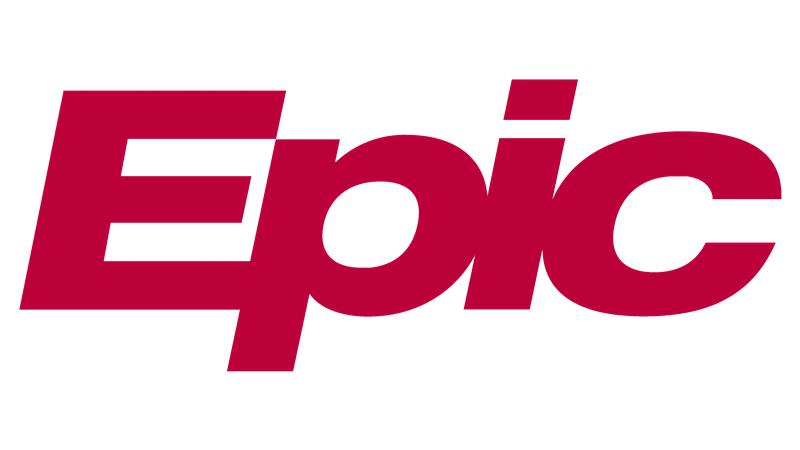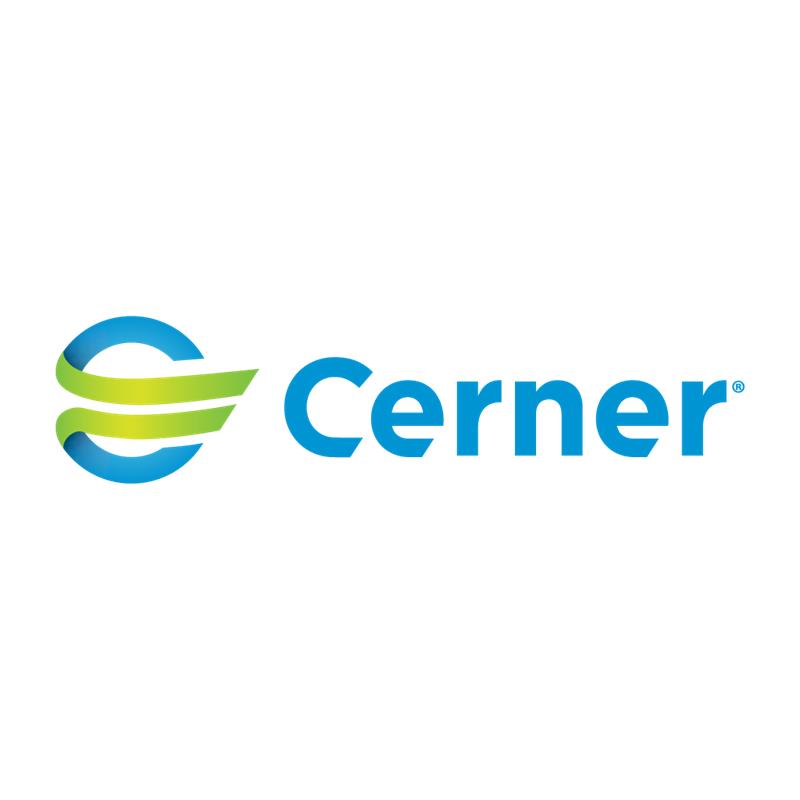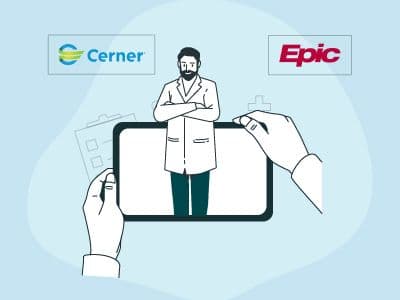Choosing between Cerner and Epic depends on how well each system supports your clinical workflows, interoperability needs, and long-term growth plans. This comparison highlights the practical differences that influence daily operations to help you choose the platform that best fits your organization’s needs.
 |  |
| Monthly Price: Custom Pricing | Monthly Price: Custom Pricing |
| Best for: Acute care | Best for: Acute care hospitals, government healthcare organizations |
| Mobile App: iOS, Android | Mobile App: iOS and Android |
| Rating: 4.4 | Rating: 3.9 |
Below is a detailed breakdown of each EHR, the types of organizations they serve, and a comparison of their key features and capabilities.
Epic and Cerner (acquired by Oracle in 2022) are two of the largest and most widely used (EHR) systems in the US healthcare industry. Together they dominate over half of the American hospital market for electronic health record systems. Both offer several functionalities, including revenue cycle management, patient communication, and more. As these are complex, large-scale solutions, deciding between them requires careful consideration.
Cerner EMR, founded in 1979, headquarters in Missouri. It is a publicly traded company providing services like electronic health records, revenue cycle management, telehealth, and care coordination.
Also founded in 1979, Epic EMR is headquartered in Wisconsin, and takes a more focused approach towards the healthcare industry. As a privately held company, it focuses exclusively on developing EHR software for the healthcare sector. The platform supports physicians with its flagship inpatient and ambulatory EHR and is known for its complex but highly customizable platforms.
The following table will provide an overview of both platforms to help healthcare providers make an informed decision:
| Features | Cerner | Epic |
Revenue Cycle Management | Comprehensive revenue cycle management platform | Integrated revenue cycle toolset, needs additions from third-party partners for advanced capabilities |
| Appointment Scheduling | Scheduling management workflows streamline the entire appointment booking process | Offers a scheduling module that enables calendar management and booking workflows |
| Patient Portal | Provides a seamless digital longitudinal record | MyChart portal centralizes communication and payment |
| Reporting And Analytics | Fully integrated analytics platform mines actionable intelligence from across its platforms | Provides a built-in BI tool that extracts insights from its vast datasets |
| Practice Management | Its ambulatory solution delivers end-to-end practice administration with tailored functionality | Supports core administrative needs |
| Insurance Claims Verification | Excels with comprehensive real-time integration across its platforms | Claims verification tools provide basic pre-authorization support directly within its EHR workflows |
| Charting | Its adaptive charting enables customizable, efficient workflows | Templated and voice-activated documentation suite streamlines the charting process |
| Telehealth | Offers end-to-end telehealth platform connecting in-home services, virtual visit scheduling and video conferencing | Telehealth module supports basic virtual care needs, although third parties offer more comprehensive home-based solutions |
| Implementation time | 12-18 months | 16-18 months |
| Integrations | Cerner takes integration to the next level with its comprehensive Health Network platform | Integrates with MyChart, Iguana, Ambara Health, and Artera among others |
| Interoperability | Cerner Ignite APIs allow seamless third-party app integration with the EHR | Epic relies on various piecemeal approaches like Share Everywhere, Carequality, and EpicCare Link to achieve interoperability |

Both vendors provide basic functionalities, such as telehealth, a strong patient-centered platform, and mobile charting to simplify tasks for staff. The following sections provide a side-by-side comparison of the features offered by Epic and Cerner.
Revenue Cycle Management
Both options include revenue cycle management, with Cerner focusing on patient-oriented automated scheduling, streamlined intake workflows, and comprehensive patient accounting. Its collaborative case management tools enhance care planning, while health information management systems integrate clinical data with coding to ensure accurate billing.
On the other hand, Epic enables dynamic visit scheduling, pre-authorization, and referral management for insurance compliance. The digital front door tool empowers patients to estimate services and manage payments.
Some Epic reviews also suggest that the system also offers electronic insurance coverage verification to enhance administrative efficiency by promptly confirming patient eligibility and expediting claims.
Patient Portal

A robust patient portal is crucial for healthcare organizations. It saves time by addressing patient inquiries efficiently. Cerner’s patient portal and Epic’s MyChart offer similar functionalities, which include secure messaging with providers, appointment scheduling, bill payments, and access to patient records.
The patient portal within Cerner electronic health record offers personalized health assessments that assign patients a health score and identify potential risks. Patients can engage with educational health action plans and utilize tools for tracking weight, activity, and more.
Conversely, MyChart provides extended payment and insurance options. Patients can arrange payment plans and seek financial assistance through the portal. They can also communicate with the billing staff.
Charting

Patient charts help view and interpret patient data, encompassing lab results. Cerner streamlines this process by providing quick access and time-saving capabilities. It minimizes charting time and maximizes patient interaction.
Conversely, Epic charting offers patient history, medical templates, and support for managing referrals, empowering providers to deliver high-quality clinical care. Epic dental software simplifies charting and review processes, enhancing patient data access and utilization.
Telehealth Services

Both Cerner and Epic are embracing the future of remote care by offering telehealth services to schedule virtual appointments. Their EHR systems facilitate virtual services, enabling global access and updates for patients and practitioners alike. However, Epic goes the extra mile with a patient-centric solution that offers progress notifications and integration with home monitoring devices for updates.
Cerner stands out with video visits, accommodating guest invitations for patient support or clarification. Patients can also participate via text and screen sharing during appointments without app downloads. This streamlined approach enhances accessibility while the EHR systems seamlessly manage online prescription refills and patient records.

Cerner and Epic facilitate seamless connectivity and data exchange among various systems. Cerner offers inherent integration and interoperability features through distinct methods that harmonize with external systems to manage operational, clinical, and financial data.
On the other hand, the Epic platform fosters internal integration, linking healthcare organization websites with its EHR. This integration empowers patients to conduct tasks such as online appointment scheduling, prescription refill requests, and accessing test results and data at their convenience.
However, when it comes to Cerner versus Epic interoperability, here’s how the two platforms differ:
Cerner Interoperability

Oracle Cerner has a strong commitment towards interoperability. It enables secure exchange of information across the healthcare ecosystem to support clinical workflows and provide positive patient experiences.
Cerner provides varied interoperability methods. An example is the CommonWell Health Alliance, a major non-profit trade association co-founded by Cerner with six competitors. Through established standards, this alliance enables easy patient data access and sharing.
Cerner Ignite APIs also allow seamless third-party app integration with the EHR. Reference Lab Networks aid Cerner users in transmitting data to multiple acute and reference labs without requiring direct connections. Its third-party integrations include Salesforce, SAP, Shopify, and more.
The vendor is also building an open healthcare platform with intelligent solutions to connect healthcare providers, payers, and public health organizations.
Epic Interoperability
Epic achieves interoperability in three different ways. Firstly, clinical practices can engage with EpicCare Link, which allows non-Epic users to access patient data shared by an Epic user via a shareable link akin to Dropbox or Google Drive. Connecting to the Carequality network offers another data-sharing method, as it’s a public-private platform facilitating connections among healthcare practitioners across the U.S.
The third approach is Share Everywhere, an interoperability feature that allows patients to share health information with external providers. It enables providers to access patient data directly from Epic without integrating with an external electronic health record system.
Moreover, Epic has introduced a feature that allows patients to share their medical records with third-party health apps through TEFCA’s interoperability framework
Cerner Vs. Epic: Pricing And Affordability

Pricing can vary significantly, depending on the selected features and user access. EHR expenses for systems like Epic or core Cerner include setup, maintenance, and hardware updates. In the Cerner EMR vs. Epic comparison, Cerner emerges as the more affordable option.
Major healthcare entities typically prefer Epic; however, its exact cost remains undisclosed. The market analysis suggests that Epic is relatively pricier than Cerner. Additional expenses may arise from healthcare compliance consulting and HIPAA audit services.
Opting for Epic incurs high expenses, whereas Cerner is considerably more cost-effective. Consequently, Cerner does not offer free trial or version offerings, requiring upfront investment for system familiarity.
Ease Of Use For Cerner
Cerner offers a user-friendly dashboard with secure access. Its responsive design suits mobile devices. While the interface has a “Chart Search” feature, users note that simple tasks can be time consuming and less intuitive, often requiring substantial training.
Additionally, Cerner boasts a straightforward interface and patient portal with a HIPAA-compliant messaging application. Patients easily communicate with providers, seek prescription refills, and schedule appointments. However, some users may find certain portal pages challenging to navigate.
Ease Of Use For Epic
Epic’s system provides multiple access paths to various functions, which can overwhelm non-technical users. Although customization options allow healthcare organizations to tailor templates and the user interface, setup, and troubleshooting often require help from the support team.
Moreover, while Epic prioritizes user-friendliness in its design, including features like appointment scheduling and secure health record access, some users still find the extensive functionalities cumbersome. This complexity may not suit healthcare practices that prefer simpler EHR solutions.
Cerner stands out for its dedicated customer support team, ensuring its users’ comprehension of technical solutions and addressing queries for optimal service.
Cerner’s eService portal, available 24/7, enhances the support experience. Its in-house system implementation includes comprehensive staff training to improve technical proficiency. However, it’s worth noting that there might be occasional delays in response times for Cerner's customer service.
On the contrary, Epic has a proficient team of technical experts reachable via a designated contact number. Prompt follow-ups within 24 hours characterize Epic’s support, while newsletters inform users about industry trends.
However, Epic’s customer support approach may be slow to accommodate user-requested changes. Additionally, intricate system operations involving many internal employees increase customer support costs.
Cerner prioritizes security and privacy and takes it as fundamental to its business. It complies with various industry standards and regulations, including HIPAA, SOC 2, and PCI DSS, with regular third-party audits to assess compliance. Cerner networks incorporate measures like multi-factor authentication, application controls, encryption, and regular security updates. Clients benefit from centralized management of user permissions, audit logging, and breach detection capabilities.
Epic also takes data security very seriously and implements multiple measures to ensure security and compliance for the users. It complies with federal standards like HIPAA and maintains the healthcare industry’s highest security certifications. Epic and its flexible security model allows customers to enforce granular access controls down to the individual data element level. The platform supports secure data exchanges through TLS/SSL encryption for all transmissions.

Both Cerner and Epic are highly scalable EHR systems. They are designed for healthcare organizations of all sizes, including inpatient facilities and ambulatory care units.
Throughout 2021, Cerner welcomed 71 new clients across diverse products and solutions while strengthening ties with over 400 global organizations. Cerner serves acute care hospitals and various healthcare practitioners, among others – underscoring its comprehensive approach to software solutions.
However, in 2022, Cerner's hospital market share saw a decline, as the vendor gained 22 new hospitals but lost 4,658 beds, largely due to its focus on smaller, standalone facilities.
Meanwhile, Epic software is now one of the biggest EHR vendors for HIMSS stage 7 hospitals and clinics. Multi-specialty groups, rehab centers, transitional care, hospice care, and retail clinics across multiple specialties use it. In 2022, 83 hospitals joined Epic’s network, adding 14,330 beds and boosting its hospital market share to nearly 36% of U.S. acute care hospitals. By 2024, Epic won the Best in KLAS award for acute care EHR (Large - Over 400 Beds). The KLAS report also shows that Epic now covers over half of inpatient multi-specialty beds across the U.S.

